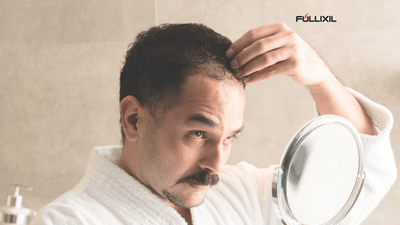Alopecia is a condition that causes hair loss. There are three types of Alopecia: Alopecia Totalis, Alopecia Universalis, and Alopecia Areata. According to studies, 40% of preadolescent children in the United States may be affected by hair loss. Hair loss affects around 50% of women and 80% of men in their lifetime. Though hair loss can occur at any age, both sexes aren't exempted.
Let's narrow down the three types of Alopecia and how it affects the human scalp and well-being.
Alopecia Totalis

It is a medical condition involving total scalp hair loss (not just male-pattern baldness). The cause is unknown, but it can be related to genetics, stress, anxiety, or other health issues. Alopecia Totalis causes the complete loss of hair on the scalp. It is one of the rarest forms of Alopecia, with only about 1% of people affected. This type of Alopecia causes loss not only of hair on the entire scalp and involves of eyebrows and eyelashes. The hair follicles are destroyed by an immune system attack on their inner layer that protects them against infections. The body attacks the immune system in some people with a weakened immune system, and no other cause can be found for the disease. This rare Alopecia usually occurs after an adverse reaction to the medication, chemotherapy, or other medical condition.
Alopecia Universalis

It is a rare Alopecia in which the entire scalp is bald, except for parts of the eyebrows, eyelashes, and pubic hair. The disease is usually confined to children and young adults. Allergens and vitiligo may cause this specific hair loss type as well.
Alopecia Areata

People with Alopecia Areata lose hair on their scalp, eyelashes, and eyebrows. It is a condition that causes sudden, patchy hair loss. The initial diagnosis usually involves a physical exam and scalp biopsy.
Common signs of Alopecia
It can occur on any part of the body, but it's most noticeable on the scalp since that is where most people have a lot of hair. Others are:
Small patches of baldness in an otherwise full head of hair - Pattern baldness in men is a common sign of Alopecia but is curable, especially when treated in its initial stage. OTC treatment/drugs like Follixil can solve this hair loss issue.
Completely bald scalp - People who suffer complete baldness may undergo a hair transplant for immediate results, even though the sessions will be costly.
A change in hair color, thickness, or texture- Some healthy hair signs are good hair elasticity, holding more moisture, and shedding usually. Without these reasonable indications, your hair is in danger of damage and alleviates more often, creating obvious gaps or patches in your scalp.
It's time to own your hair again. Your hair is your accessory; beat hair loss with the right product. Start it with FREE educational videos for you to prepare for your hair restoration journey with Follixil- Minoxidil Treatment. Remember to check out a genuine and honest opinion from the hair loss expert: @thehairlossdude.











